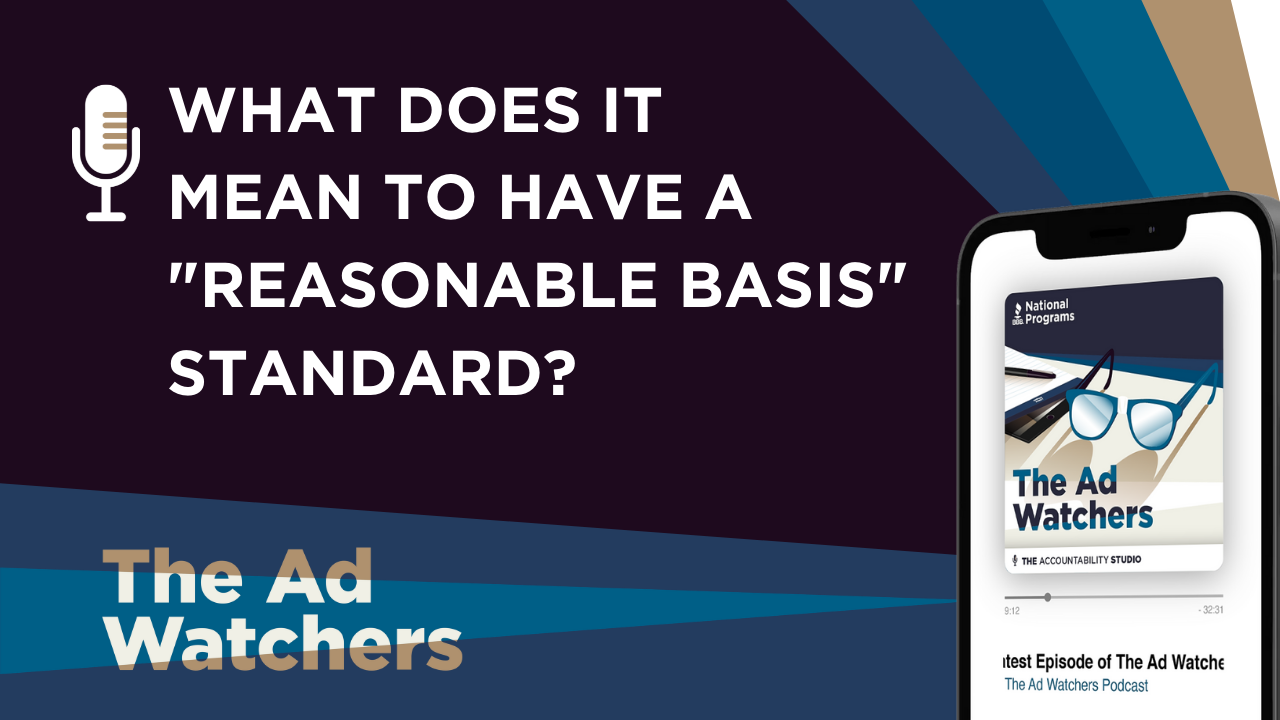
During the second episode of the Ad Watchers series, hosts Hal Hodes and La Toya Sutton engage their listeners in an insightful conversation about the importance of advertisers having a “‘reasonable basis” for their claims. They dive deeper into this topic by defining “reasonable” and what this calls for regarding the level of support and type of evidence needed to substantiate a claim.
For purposes of this episode, Hal and La Toya explained that the standard for defining “reasonable” is the Pfizer Factors.
The Pfizer Factors were first outlined by the Federal Trade Commissions (FTC) in a 1972 case and are listed below:
- The type of product.
- The type of claim.
- The consumer benefit from a truthful claim.
- The ease of developing substantiation for the claim.
- The consequences of a false claim.
- The amount of substantiation experts in the relevant field believe is reasonable.
These are the guiding factors of Advertising Substantiation, memorialized in a 1983 FTC policy statement discussing establishment claims.
The Pfizer Factors are a flexible standard. Hal explained that its position as a flexible standard means, “it goes to optimizing for consumers the effect of this rule, this standard. If this were a rigid standard, it wouldn’t necessarily match the optimized amount of truthful advertising that a consumer would get.” This allows advertisers to maximize truthful information and minimize unsupported details.
Hal and La Toya walked through each of the factors, discussed what they are, how NAD looks at them, and how they are understood.
- The type of product and type of claim: These two factors are interrelated regarding impact. The product and claim frequently combine to inform advertisers of the level of evidence expected to substantiate a claim.
- The consumer benefits from a truthful claim and the consequences of a false claim: These factors were described by Hal as two sides of the same coin. La Toya characterized this as the advertisers’ need to understand the importance of the ads they create. Advertising promises consumers a benefit that advertisers need to be able to demonstrate will be received. Additionally, they discussed the negative impact of false ads on society as a whole.
- The ease of developing substantiation for the claim: Hal and La Toya began by emphasizing that consumers receiving truthful advertising will always be a priority at NAD. Following, they detailed how this factor calls for additional flexibility that allows for the evolution and implementation of new reasonable methods of demonstrating substantiation.
- The amount of substantiation experts in the relevant field believe is reasonable: This factor is strongly considered when parties, challengers, and advertisers alike, present evidence to NAD about what is reasonable for substantiation standards. Often, they will share what experts feel is relevant. This factor calls for a general scientific consensus, which is based on the opinion of more than one expert and still considers standards that support the expert’s stance.
To bring the episode to a close, Hal and La Toya stressed that when using Pfizer Factors as a standard, they should be considered in how each aligns versus reviewed in isolation. They also encourage advertisers to always think about industry standards to understand reasonable and regulatory guidelines.
Visit to Learn More: NAD FAQ’s
Contact Information: nad@bbbnp.org

